In the past year alone, several of our customers have experienced fires in their premises. These fires have ranged from small but nevertheless dangerous fires to large scale, devastating fires that have been responsible for thousands of pounds worth of damage. It goes without saying that a fire can be devastating to a business—some never recover, but others refocus and come back stronger. Having spoken with our customers who have sadly experienced fires recently, we were struck by the need for proper fire safety protocols.
“We had a devastating fire on Friday 27th August which resulted in the loss of our building, all our equipment and sadly thousands of pounds worth of customer’s items. We are still in shock and just can’t believe how everything just disappeared in an instant. We’re currently dealing with insurers in the hope our business can be saved and that my staff can get back to work asap. Going forward, if we can rebuild – we’ll be installing a sprinkler system and alarm links to the fire brigade so that if this should ever happen again hopefully things will be saved. Thankfully nobody was hurt, and this is the most important thing but the knock-on effect to all our customers is very sad for us all.”– Emma Robertson, General Manager, Beauly Laundrette
An insurance claim being upheld is a huge step towards recovery, and this can hinge on the business providing evidence that proper fire protocols are in place and being followed—so, clearly, they are extremely important. Your protocols will be evaluated by insurance providers to assess the validity of any claim.
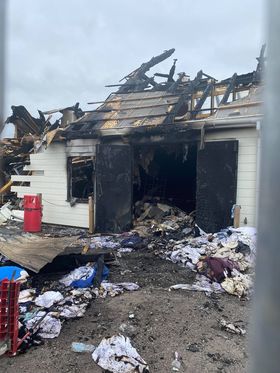
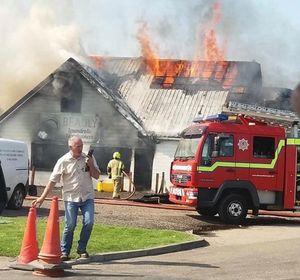
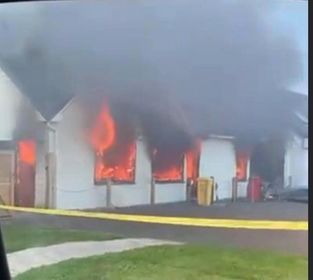
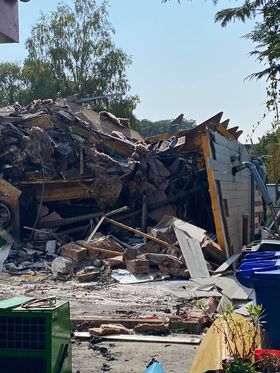
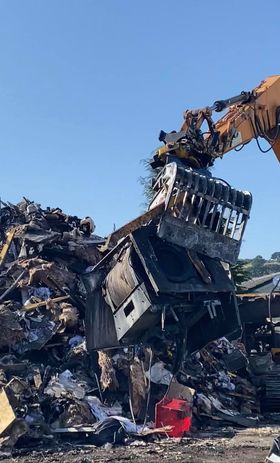
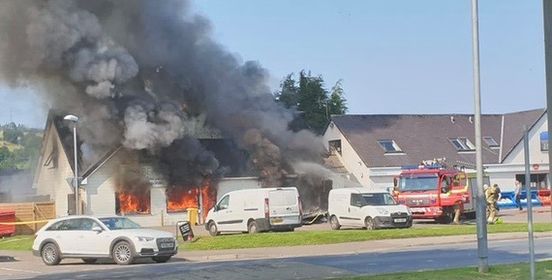
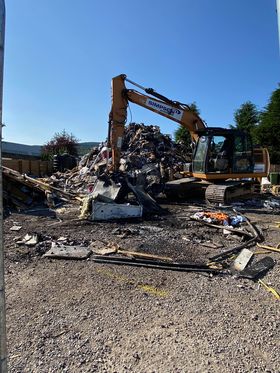
There are many fire hazards in laundries and dry-cleaning businesses which you should be aware of. Not only that, but anyone working within these premises should know how to deal with different types of fire.
Having a clean and tidy workspace not only looks good, but it is also an important best practice to keep fire escape routes clear and to be able to easily see and identify any potential hazards.
Lint build-up is a major factor in fires spreading. Lint gets everywhere in a laundry and builds up on surfaces which are often overlooked when cleaning, for example, overhead ducting and the tops of shelving. Lint burns quickly and easily if ignited so regular cleaning of lint traps and any other areas where lint collects is essential to reduce this risk.
Spontaneous combustion occurs when a pile of textiles suddenly burst into flames. This can be caused by a chemical reaction between fats and oils left on textiles, reacting with oxygen in the air. This is prevented by ensuring that greasy and oily textiles are not left lying for periods of time in hot conditions before cleaning and are processed effectively. Ensure all work is thoroughly cleaned using an emulsifier to break up grease, hang to cool and air, and keep stacks of folded work away from heated pipes or other heat sources. Routinely checking and recording the temperature of completed work can help to identify any potential risks. The temperature should be taken from the middle of a stack as this can retain heat and be significantly hotter than the outer layers.
Electrical faults are another major cause of fires which can be readily avoided by good housekeeping. Keeping the unit clean and tidy with all work neatly stacked, railed, and safely out of the way of any potential hotspots, will help any faults to be easily identified dealt with. Regular maintenance of machinery and PAT (portable appliance testing) testing of any plug-in appliances will greatly reduce this risk.
Fires caused by chemicals igniting are rare but care should still be taken on appropriate storage of any flammable chemicals held on site.
Often fire safety protocols exist in a dusty folder somewhere and staff aren’t aware of them. To be effective these must be regularly reviewed and updated as needed. New staff should be trained in these protocols, shown the fire alarms, fire exits and assembly points as well as where extinguishers are, when and how to use them. Fire extinguishers should be the correct type, properly maintained and easily accessible. Fire escapes should also be properly marked and free of obstructions. Regular fire drills should be carried out and records of these kept. If you were to ask your staff the following questions, would they know the answers?
What does the fire alarm sound like?
Where are the fire escapes?
Where is the fire assembly point?
Where are fire extinguishers located and which one should be used for an electrical fire?
Who is responsible for ensuring the regular cleaning of lint?
Where are the risk assessments and fire safety protocols located?
If you or your team are unsure as to the answer to any of these questions, it would be worth taking the time to carry out training, which is well worth it to avoid potential disaster. If you require any further tips or advice, please get in touch and we would be happy to help.